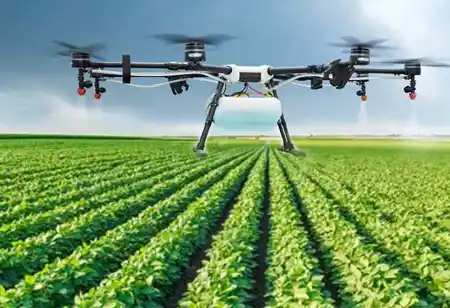Thank you for Subscribing to Agri Business Review Weekly Brief
What Greenhouse Farming has to Offer?
Globally, greenhouse farming has gained much popularity.

By
Agri Business Review | Monday, July 17, 2023
Stay ahead of the industry with exclusive feature stories on the top companies, expert insights and the latest news delivered straight to your inbox. Subscribe today.
Globally, greenhouse farming has gained much popularity. It all began in the 13th century as a means of meeting the dietary requirements of royalty. This was also a method of growing therapeutic herbs back then. The science of greenhouse growth has been extended to institutions.
Fremont, CA: Globally, greenhouse farming has gained much popularity. It all began in the 13th century as a means of meeting the dietary requirements of royalty. This was also a method of growing therapeutic herbs back then. However, for scholars to advance their research, the science of greenhouse growth has been extended to institutions. Nowadays, everyone may use greenhouse farming thanks to the development of technology in the agricultural sector.
Higher Production
Greenhouse farming can enhance agricultural yield by creating the ideal temperature conditions for plant growth in a greenhouse and growing more plants per square foot than in an open field.
Reduced Production Risks
Crops are protected from damage from extreme climate-related occurrences, such as abrupt rises or fall in temperature, by being enclosed. Additionally, it can protect crops from birds and other creatures that could damage them.
Increasing Profits
According to studies, greenhouse farming can produce two to three times the revenues per crop per square foot as open-field farming when combined with additional strategies such as hydroponics. Less waste is produced when resources are used more effectively, which can lead to increased earnings.
Pest and Disease Prevention
Pest issues can be avoided with greenhouses, and they also offer better disease management. Only the necessary workers can enter and exit the enclosed area, which reduces the possibility of bringing undesirable elements close to the crops. Additionally, it enables you to pinpoint issues should they arise.
Continuous Growth
A greenhouse is a largely independent climate-controlled area that enables crops to be grown year-round instead of merely during certain seasons. High-quality crops may be grown everywhere, even in the freezing winter months or the scorching summer heat, as long as you have the equipment to establish the ideal atmosphere within the greenhouse.
Enhanced Security and Stability
The greenhouse's covered atmosphere offers a secure and stable setting because outside factors don't always affect plants or workers. With so many structural, environmental, and financial advantages, it is hardly surprising that greenhouse farming has gained so much traction. In addition to large commercial processors, there are also home businesses that prepare greenhouse produce. The potential for development is endless. Those who support this method of farming claim that greenhouse product is picked when it is ripe and has a longer shelf life.
When compared to traditional farming, greenhouse farming has several advantages, including less pollution, reduced energy use, and more resource conservation. Growing plants year-round in greenhouses with ideal climate control conditions increases crop adaptability. The greenhouse farm of the future, along with technological advancements, might help us meet our food needs while lessening our adverse effects on the environment.





